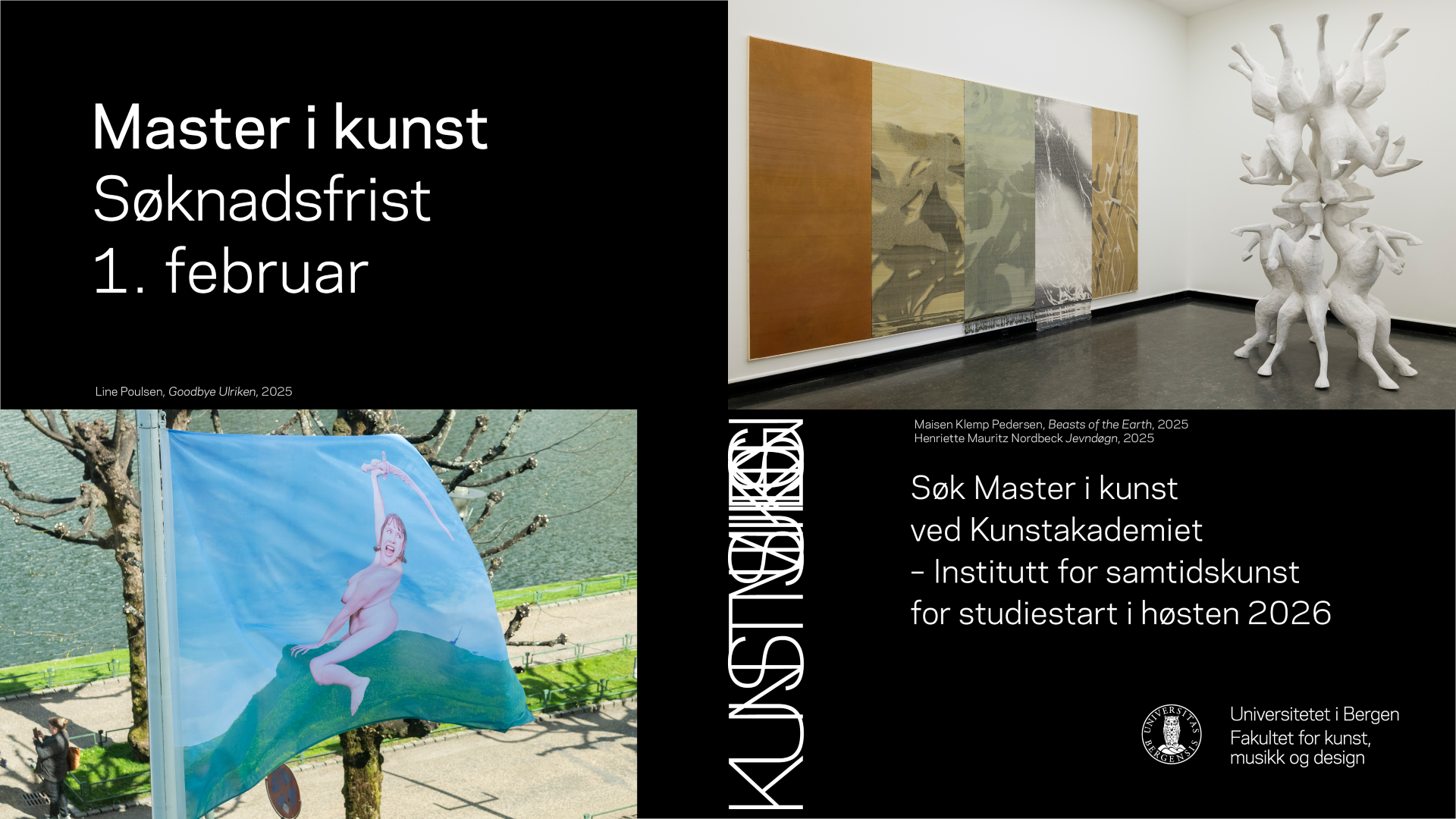
Arthur Jafas film Love Is the Message, The Message Is Death (2016) samler et bredt utvalg bilder fra afroamerikansk historie i en syv minutter lang, høytempo-montasje, tonsatt med gospelinspirert hiphop. Svarte ikoner, som tidligere president Barack Obama og Martin Luther King, Jr., og dokumentasjon av viktige historiske hendelser sidestilles med ukjente ansikter og kropper, noen ofre for politivold, andre del av demonstrerende eller dansende folkemasser. Love Is the Message vises i utstillingen Medicine for a Nigthmare på Kunstnernes Hus i Oslo, der Jafa stiller ut sammen med Frida Orupabo.
Jafa er ikke bare anerkjent som filmskaper og kunstner, men også for arbeidet han har gjort som filmfotograf for regissører som Spike Lee og Julie Dash. Målet hans er å skape «a black cinema with the power, beauty, and alienation of black music». Jafas virksomhet er vanskelig å hegne inn. I filmene kombinerer han dokumentar, funnede bilder og popmusikk, men praksisen hans omfatter også installasjoner, forelesningsperformancer og happenings. Den spredte outputen forenes av et gjennomgående fokus på det afroamerikanske samfunnets fortid og fremtid, samt utfordringer knyttet til rasisme, representasjon og identitet.
Jafa satte generøst av tid til å snakke med Kunstkritikk da han var innom Oslo en kort tur tidligere denne måneden, i forbindelse med en opptreden på Kunstnernes Hus. I intervjuet som følger diskuterer han, blant annet, hvordan formale avgjørelser kan påvirke seerens kropp og persepsjon, og han utdyper begrepene «hvithet» og «svarthet» i relasjon til bidraget sitt til årets Veneziabiennale, hvor han skal vise en utvidet versjon av sin seneste film, The White Album (2018).
[Intervjuet gjengis på engelsk.]
Zofia Cielatkowska: Watching Love Is the Message, The Message Is Death, I was confused by the combination of disturbing images and Kanye West’s joyful music…
Arthur Jafa: There is something in what you’re saying. Some people are telling me that they cannot listen to that music anymore without thinking about these images; the music evokes them straight away. For me, the initial thing was more of creating one of these videos people throw on social media that show the violence of the police towards black folks. I just wanted to string them together, and once I did that, they seemed to evoke or imply something, and then I edited the whole thing. It was very straightforward. The music was added later, and for sure these images were not made for music per se. If you think of video works in general, images are often in sync with the music, so when the synchronisation is disturbed, it brings new qualities. I think that this non-linear approach is more interesting for the viewer.
ZC: And this non-linearity is also connected with the speed, which I believe you use very consciously in your works.
AJ: The speed is necessary to move from one thing to the other. The barrier for the speed is formal or structural; you cannot go faster than 24 frames per second. What I think really matters is the space between the frames. In classic cinema, the interval is metronomic, even, and when it is not, it affects your body. In Apex (2013), for instance, all of the images appear for less than a second, which means that it is ‘slow’ enough to register what it is about but too ‘fast’ to let you dwell on it. If you try to read every image in Apex, you’ll go crazy. I think that the medium itself has the capacity to create certain neurological responses.
ZC: Does it matter then if in Apex one recognises African American historical figures like civil rights activist Frederick Douglass or abolitionist Sojourner Truth?
AJ: The content and the figures do have meanings and significance, but I wouldn’t say it is necessary to understand it. There are just different discourses going on. You don’t have to understand the lyrics to get the power of music. Or maybe you can understand the words, but still not get the context. How many people in Europe get that when James Brown says “I’m super bad,” he means good? There are different levels of understanding, and in the case of Love is the Message, The Message is Death this kinaesthetic intensity and its neurological effect is a big part of the work.

ZC: In cinema, black characters are traditionally neither as prevalent nor as positively portrayed as white characters. Julie Dash’s film Daughters of the Dust (1991), your debut as cinematographer, was exceptional in this regard.
AJ: True. Normally, if people watch movies they identify with a character, most often the good character; that’s how cinema works on a perceptive and emotional level. Most of the cinema was created and still is – to a lesser extent, but still – by white men. Women have to identify with characters created mostly by men, black people have to identify with images created by white people. In this respect, white men are the most underserved to train their muscle to identify with somebody other than themselves. Then there is this resistance or inability to identify with black people, as if identifying with the black figure would undermine something. The question then is what it is that is undermined. If Daughters of the Dust did something transformative, it is based in the raw fact that the only subject positions to occupy for you as a viewer are ones with black bodies.
ZC: Raw facts or simple descriptions might be considered political if one is perceived as talking from a specific position. Do you feel that tension?
AJ: I’m aware that there is a political tension put on me making work that privileges a black figure, but I’m just trying to make things to show how the world is understood. I’m interested in creating things which seem to be connected with real understanding, real meaning. And from that point of view, blackness, among other issues, is an important subject to me and in the world we live in.
ZC: And whiteness is a part of that world as well. Is that what your project for the Venice Biennial is dealing with?
AJ: The project, at least for me, is trying to focus on a tension between white supremacy and whiteness. The project is also about people who are white, who I care about. Whiteness is, just by its very definition, based on purity. And purity is a fragile concept – it cannot be in front of the face of otherness. Blackness is not obsessed with purity. Whiteness is just one of the frames, and I guess most white people have never contemplated whiteness as being in the frame. Where would white people be if they could be outside of the frame of whiteness? And even if they do contemplate it or understand it intellectually, there is still the level of practice: what to do with that knowledge. I’m against whiteness in the same way that I’m against patriarchy, heteronormativity and so on. Being against whiteness is not about being against white people, but against a system that is harmful. Against the system of whiteness that is connected with privileges, assumptions, and stereotypes.

ZC: I like that your work is also about people you care for. One can be born white, but doesn’t have to be for whiteness. The question then is simple and difficult: how to make other people care?
AJ: There is no magic. And a big part of what influences people to move differently in the world is a capacity to perceive the different spaces they can’t move. And if you understand and accept that the world is diverse, that it has many different dimensions, then you can begin to discuss how you might want to be in the world.
ZC: Both historically and in the present, there are obstacles preventing black people from moving freely, and they impact how art is created and understood.
AJ: The very circumstances in which African people found themselves in America did not allow them to have self-determinacy, and they had to develop their self-conception outside of the given frame. Art and creative activity require such things as material stability, favourable environment, richness and materials in the most basic and simple understanding of it. All of these things were out of reach for black people. If you don’t have or don’t control material, you have to become material yourself. And music is something that does not require material, it has the possibility of being constantly recreated. Then again, black history is a history of absence. In the dominating narratives of history, black people are not there. Of course, it does not mean that they were absent, it just means that they were outside of the frame producing history.
ZC: There is this great research on African American photography of the 19thand 20thcenturies by Deborah Willis. Going through her books, I noticed the absence of landscapes.
AJ: Perhaps what you are saying is true. I cannot think of any black Ansel Adams…
ZC: There are different strategies for rewriting the past. It worries me how certain subjects are historicised or framed in current discourses. Lorraine Hansberry was a great playwright and she was also a ‘black female playwright’, but if her texts are going to be analysed only under that label, it is limiting. I’m not denying objective conditions, I’m just concerned about this labelling effect.
AJ: I would say that everything has got a context. It is true that Loraine Hansberry can only be fully understood in the context of blackness, but that is true for anybody. Henrik Ibsen can only be fully understood in the context of whiteness, but we don’t think of it that way or call it that. We just assume that it is normal. Then, of course, there is the question of how you as an artist describe yourself. I always say that I’m a black filmmaker, a black artist. I’m not trying to resist the designation as in itself wrong. What people are trying to resist is this – as you say – labelling effect. If you are a female poet or a black poet, you are perceived as a second. That’s what people are reacting to. My thing is to be a black artist and to operate to my fullest capacity. If people want to bring negative association to it, that’s their problem.

Merknad: Denne artikkelen ble opprinnelig publisert i skribentens tidligere navn, Zofia Cielatkowska.








